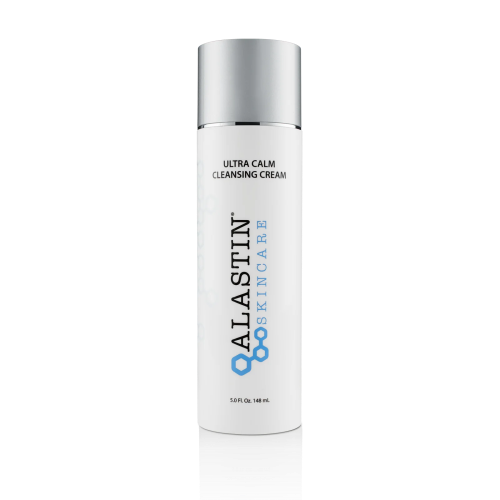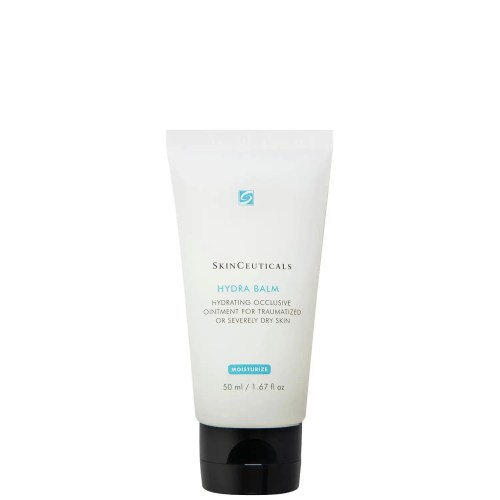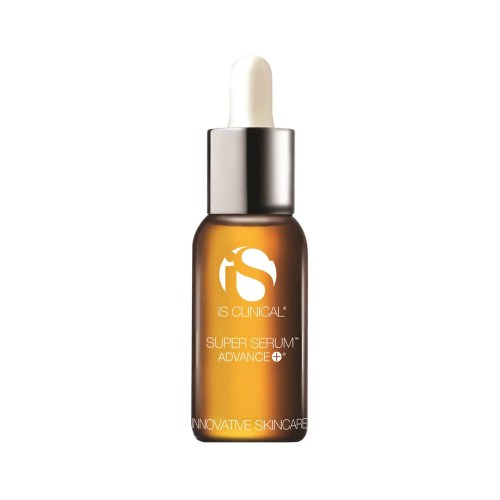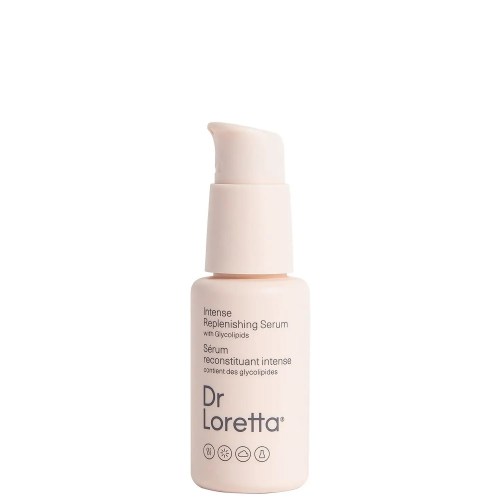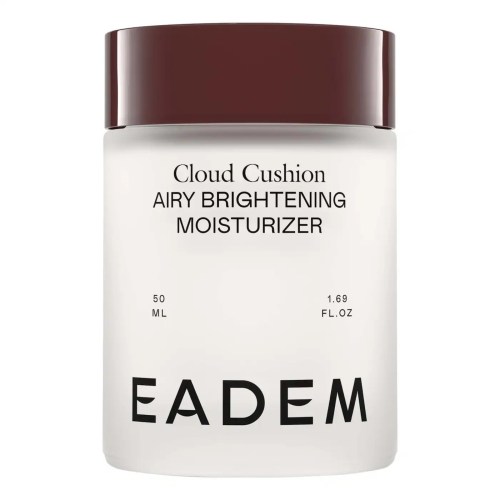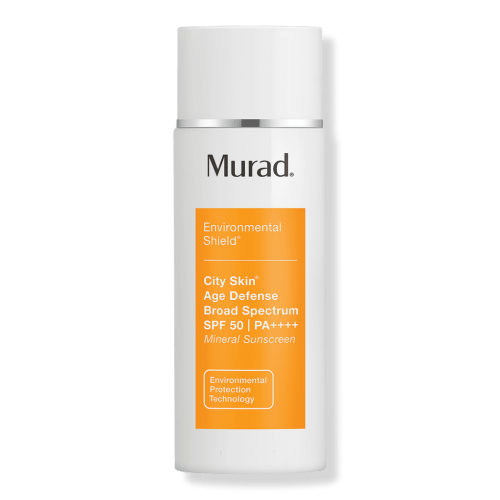Our editors independently select these products. Making a purchase through our links may earn Well+Good a commission
Everything You Need To Know About Fraxel, the Skin-Resurfacing Laser Celebrities Swear By
The Fraxel laser is known as the gold standard for its ability to resurface skin and diminish the appearance of wrinkles.Here's what to know.
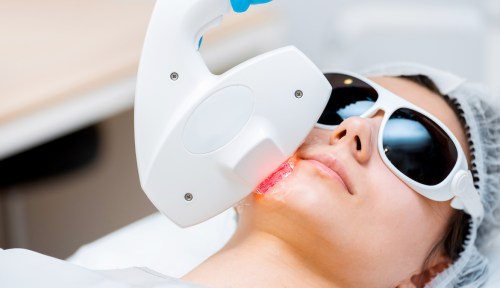
I spent the entire elevator ride to Shafer Clinic in Manhattan considering chickening out of the Fraxel treatment that was waiting for me on the 33rd floor.
Experts in This Article
board-certified dermatologic surgeon at Shafer Clinic Fifth Avenue in New York City
board-certified dermatologist and founder of Dr. Loretta Skincare
Though the do-it-all laser has long been regarded as the gold standard of skin care, it has a reputation for requiring some serious downtime, and I wasn’t sure I had the guts to go through with it. But with the benefits from a single treatment in the back of my brain—a reduction of fine lines, improved skin texture, sun damage repair, acne scar reduction, skin resurfacing, a boost in skin firmness, and the list goes on and on (and on)—I decided to see it through.
Although my initial apprehensions about the Fraxel treatment turned out to be largely unfounded, I did require a significant amount of downtime to see the glowy bounce that has long been oohed and ahhed about by those in the know. To ensure you reap all the benefits while avoiding any pitfalls, I’m sharing my comprehensive take on the procedure in this “first timers” guide.
Understanding the Fraxel Technology
“Fractionated lasers, [which are used for Fraxel treatments], work by directing microscopic laser columns at the skin, creating tiny injuries in certain parts of the skin barrier while leaving other zones of healthy surrounding tissue untouched,” says Dendy Engelman, MD, FACMS, FAAD, board-certified cosmetic dermatologist and Mohs surgeon. “These microscopic injuries trigger the skin’s natural reparative processes.” In turn, this leads to that long list of benefits.
Within this set of lasers, there are two main types: Ablative lasers, which vaporize the top layer of the skin, effectively treating more severe concerns—like deeper wrinkles and sagging—but require longer recovery; and non-ablative lasers, which focus on the underlying layers of the skin for milder concerns—like photo-aging, fine lines, and hyperpigmentation—with minimal downtime.
By contrast, non-fractionated lasers, like CO2 lasers, “act on every part of the target area,” says Dr. Engelman. This means that while you’ll likely see more robust results from these treatments, they can come with up to two weeks of downtime.
On the spectrum from “lunchtime lasers” like IPL (intense pulsed light treatments, which use a broad spectrum of light and are gentler) to the types of treatments that leave your skin crackling up like you’re tonight’s dinner, Fraxel serves as a nice in-between—a five-day downtime that will leave your skin looking fresh and new.
Wait, is there more than one Fraxel laser?
Yes. Now that you’re well acquainted with the types of technology behind these lasers (fractionated versus unfractionated; ablative versus non-ablative), we can go deeper. Fraxel is a brand name for a class of fractionated lasers; the same way Botox is a brand name of a neuromodulator that freezes your muscle. There are a bunch of different fractionated lasers, but the ones you want to become most familiar with are:
Fraxel Re:Pair
This laser is an ablative, CO2 laser, which means it will “vaporize” the top and deeper skin layers to stimulate your body’s wound-repair triggers. It results in prominent collagen creation for those with sagging and deeper wrinkles, but the downtime is no joke and can last up to two weeks. Also, because you’re wounding the top layer of skin, there’s a potential for hyperpigmentation, so you should make sure to speak with your dermatologist about the potential risks and benefits of opting for this treatment. It’s important to note that more intense lasers don’t often mean “better” results. You need to match what you’re looking for with what a laser does.
Fraxel: Dual
The latest Fraxel models—like the Fraxel Dual—are non-ablative and fractionated, and deliver heavyweight results without having to cancel weeks’ worth of social plans. The Fraxel Dual uses two wavelengths—1,550 nanometers (nm) and 1,927 nm—which gives it the power to work on multiple skin layers.
“Harnessing the power of two different wavelengths allows Fraxel to target different layers of the skin barrier,” says Dr. Engelman. “The 1927 nm wavelength acts on the epidermis, or the outer layer of skin, while the 1550 nm wavelength acts on deeper layers of the dermis as well as the epidermis.”
Studies have shown that the 1927 nm wavelength is beneficial for removing hyperpigmentation, while the 1550 nm wavelength helps improve fine lines as well as scarring. In other words, as the name suggests, it’s “dual” acting in that it gives you both topical and collagen-boosting results.
Lumenis Resurfx
Outside of the Fraxel brand name, this laser operates at a 1565 nm wavelength, giving comparable results to Fraxel Re:Store, a non-ablative, single-wavelength laser. It only requires a single pass over the skin, and it has a cooling tip so that it feels more comfortable as you’re treating each area. It was the laser that I tried at Dr. Engelman’s office.
Nd: Yag
The Nd: Yag is a Q-switch laser—meaning it delivers high-intensity pulses for short amounts of time—that operates at a 1064 nm frequency. It’s a non-ablative, fractionated laser that’s able to be used on darker skin tones for a wide range of benefits, including skin rejuvenation, acne scarring, and more.
One note on how lasers work: they often use light to seek out melanin in the skin, and melanin-rich skin can absorb that heat, leading to potential scarring and hyperpigmentation. “As in nearly every industry, technological advancements have emerged in recent years to improve equipment and techniques, resulting in more efficient lasers,” says Dr. Engelman. “One great advancement is the Nd: YAG laser, which—unlike many lasers—can safely be used on deeper skin tones.”
What are the main benefits of Fraxel
1. Increased Collagen Production
You know the bouncy kind of skin that celebrities chalk up to “drinking a lot of water” or “getting a good night’s sleep”? Yeah, this is what they’re actually doing. “Collagen can be likened to skin’s ‘scaffolding,’ and gives skin a more youthful appearance,” says Dr. Engelman. “The regeneration of collagen post-Fraxel makes the skin appear firmer, plumper, and more youthful overall.”
2. Improved Cell Turnover
If your skin texture is looking a little meh, you might just need to speed up the turnover of some of your cells to get rid of the dead ones and show off the glorious, glowy ones sitting just beneath the surface. “The result is brighter, fresher skin and more even texture and tone,” says Dr. Engelman.
3. Reduction in Hyperpigmentation
“Deep laser penetration into the skin barrier is effective for breaking up scar tissue and allowing the skin to regenerate healthily, resulting in improved texture,” says Dr. Engelman. “Shallow penetration into the epidermis breaks up excess melanin and replaces dyspigmented areas with a more even skin tone.” This results in a more even-toned complexion that’s free of melasma or other hyperpigmented spots.
Who Fraxel is right for
If you’re interested in laser resurfacing, you need to consider your lifestyle along with your individual skin concerns. “Like all lasers, Fraxel is not good for people who have an outdoor lifestyle where they cannot avoid sun exposure post-procedure,” says Loretta Ciraldo, MD, a dermatologist and founder of Dr. Loretta Skincare.
She adds that if you have a consultation for a laser, remember to ask a lot of questions of your specific provider for the best results. “Keep in mind that there are now many fractionated lasers and the settings may be adjusted to the person’s tone,” she says. “It is of the utmost importance that you ask many questions before you have laser treatment so you can make a very informed decision on if you should be lasered and which laser is best for your skin.”
Inquire about things like downtime, how many treatments you’ll need to achieve the results you’re after, and which laser will work best for your particular skin type, tone, and concerns.
What a Fraxel session is like
A Fraxel appointment always starts with pre-treatment numbing. The technician will apply a numbing gel all over your face (inevitably, I always get this in my mouth and feel like I’ve undergone dental work; don’t make my mistakes and lick your lips!), and after 30 minutes to an hour, you’re ready to go.
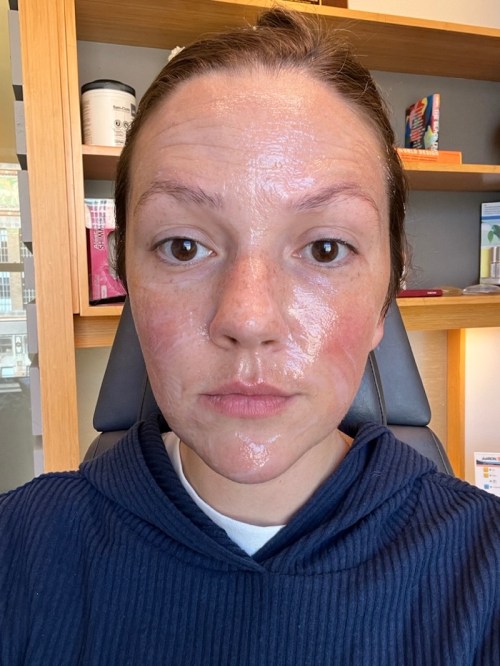
After the laser flicks on, you can definitely feel it working—it reminded me of a fairly aggressive rubber band snapping on my skin every time it pulsed. The laser head is about the size of a nickel, and so it takes repeated triggers to cover the entire area. I didn’t think I would need the cushion-y stress ball that the technician offered me to distract me from the discomfort, but after one-half of my face was treated, I changed my tune. Though there is some (manageable) pain involved, the tip of the laser has a cooling head that helps your skin from feeling too hot—you won’t get the same singed hair-and-skin smell you get with IPL and other types of lasers.
All in all, the procedure takes 20 minutes (on top of the 30 minutes to an hour of numbing) and is followed by 10-ish minutes of icing to reduce the swelling before you’re on your way.
What the recovery is like
Right after:
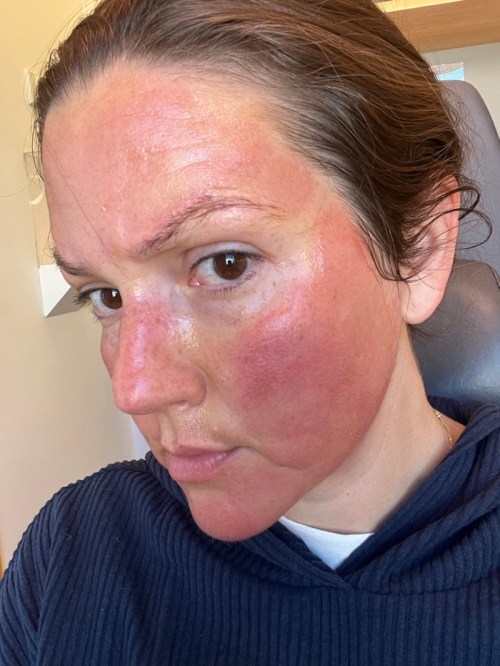
Days 1 and 2:
“Your skin will most likely feel and look swollen, red, and hot—similar to a sunburn,” says Dr. Engelman. “It’s crucial to stay hydrated and out of the sun, and to regularly apply a cold compress as this is when your skin is at its most fragile state.”
I was actually much more swollen than I’ve ever been with a sunburn, and would instead say that the first day I looked like any one of the Mrs. Doubtfire personas. My face was not my own, but I diligently slathered on the SkinCeuticals HydraBalm ($25) and took an antihistamine, which are regarded to help with swelling.
A lot of people probably wouldn’t have left the house, but I threw caution to the wind and met a friend for coffee and picked up another friend’s marathon bib with her. I feel like we can start to normalize everyone not looking their best every second of every day, no?
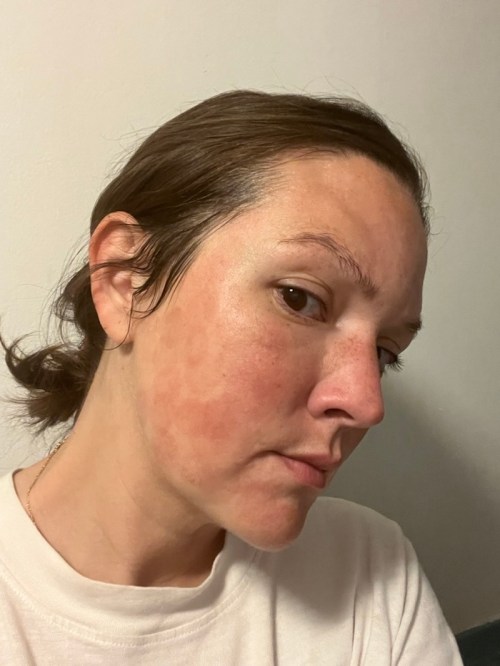
Days 3 and 4
On about day three, right on the clock, the swelling started to subside. “This is when you can slowly start to integrate skin-care products recommended by your provider,” says Dr. Engelman. “Most of these products will focus on hydration, nourishment, and reparation.”
“Fraxel laser boosts collagen production in the skin while vitamin C is known for its role in collagen synthesis, so using it in conjunction may enhance the overall collagen-stimulating effects,” says Dr. Engelman. “Vitamin C is also an essential antioxidant that protects the skin from free radicals and pollution damage, which is especially important during the post-laser healing phase when the skin is more susceptible to damage.”

Days 5 and 6
While I was certainly hoping for a BabyFoot-like reaction on my face, I never experienced significant shedding, but I did see some flaking. “You will most likely see your skin start the peeling process, which will eventually reveal healthier skin underneath,” says Dr. Engelman. “Continue using skincare products as recommended and being diligent about sun protection such as applying sunscreen and wearing sun protective clothing.”
One unexpected result that came from getting Fraxel was that my skin started to purge, which apparently isn’t all that uncommon. Because the laser speeds up cell turnover, it can result in some Millia and small pimples being pushed to the surface of the skin (I also used a thick moisturizer that wasn’t non-comedogenic which likely contributed to my post-treatment breakouts.)
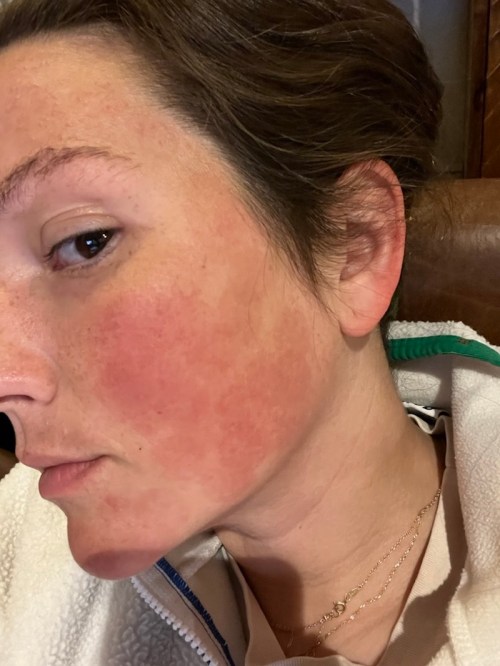
Day 7 and beyond
Dr. Engelman says that getting the best results from your Fraxel treatment really comes down to maintaining a robust skin-care routine. “Recovery varies from person to person, depending on the intensity of the treatment and each person’s skin type,” she notes.
Around the one-week mark, my skin looked all around better than it had. I was seeing that bounce come back, and the patch of hyperpigmentation on my cheek that I wanted to diffuse was softer; however, it was around two weeks when I saw significant changes in the texture of my skin. It was smoother and clearer than it had been in some time. So, with Fraxel: Patience is key.

The post-Fraxel products to use
Alastin, Ultra Calm Cleansing Cream — $49.00
After any intensive dermatological treatment, you want to wash your face with something that will gently cleanse it without stripping the skin or causing irritation. I like Alastin, which is a derm-developed brand that’s particularly good for post-procedure protocol. This gentle cream cleanser doesn’t disrupt your skin’s pH balance and it’s non-comedogenic and hypoallergenic, making it an all-star soother for skin recovering from Fraxel.
SkinCeuticals, HydraBalm — $50.00
I love this occlusive as an alternative to Vaseline. Because it’s spiked with aloe vera and squalane, it soothes and hydrates the skin while also providing a lock-tight barrier so no water molecules can escape from your complexion.
iS Clinical, Vitamin C Serum — $158.00
This potent vitamin C serum is aided by copper peptides, which help to give it even more antioxidant prowess so that it can better protect against environmental stressors (which cause visible signs of skin damage). It goes onto the skin smoothly and never, ever feels sticky, making it easy to layer morning and night.
Dr. Loretta, Intense Replenishing Serum — $70.00
Even if you forgo every other post-treatment product, you’re absolutely going to want to use something that hydrates your skin after you have Fraxel done. This star option from Dr. Loretta contains a cocktail of antioxidants alongside glycolipids, lecithin, linoleic, and linolenic acids to hold moisture deeply within the skin.
Glo Skin Beauty, BioRenew EGF Drops — $136.00
These drops help to repair your skin’s barrier, effectively speeding up the time it takes your skin to bounce back post-laser. I mix them with vitamin C and slather the concoction all over my face.
Eadem, Cloud Cushion Brightening Moisturizer — $58.00
This go-to moisturizer contains an all-star cast of plant ceramides, glycerin, squalane, chamomile extract, and niacinamide helping it to deeply hydrate while also soothing post-procedure skin.
Murad, City Skin Age Defense Broad Spectrum SPF 50 — $69.00
Post-laser, I wanted to shield my skin from any sun hitting it, so I opted for a physical blocker that contains zinc oxide and titanium dioxide. It has a slight peachy tint that helps it blend imperceptibly into my skin.
The final verdict
Despite my initial trepidation with Fraxel, I’d now readily recommend it. It’s about a six or seven on the pain scale when you’re in the chair, and while the recovery does take an extended amount of time, the results are pretty incredible and long-lasting. If you went ham in the sun this summer or have had a baby and find yourself with hyperpigmentation (it me!), if you want to do the equivalent of fluffing your duvet for your skin, it could be well worth talking to your dermatologist to hear more about if it’s right for you, too.
Sign up for the Well+Good SHOP Newsletter
Get exclusive deals on wellness, beauty, fitness, and food products that have been hand-picked by our editors.
Got it, you've been added to our email list.



